
Responsive website - UX Research and Design case study
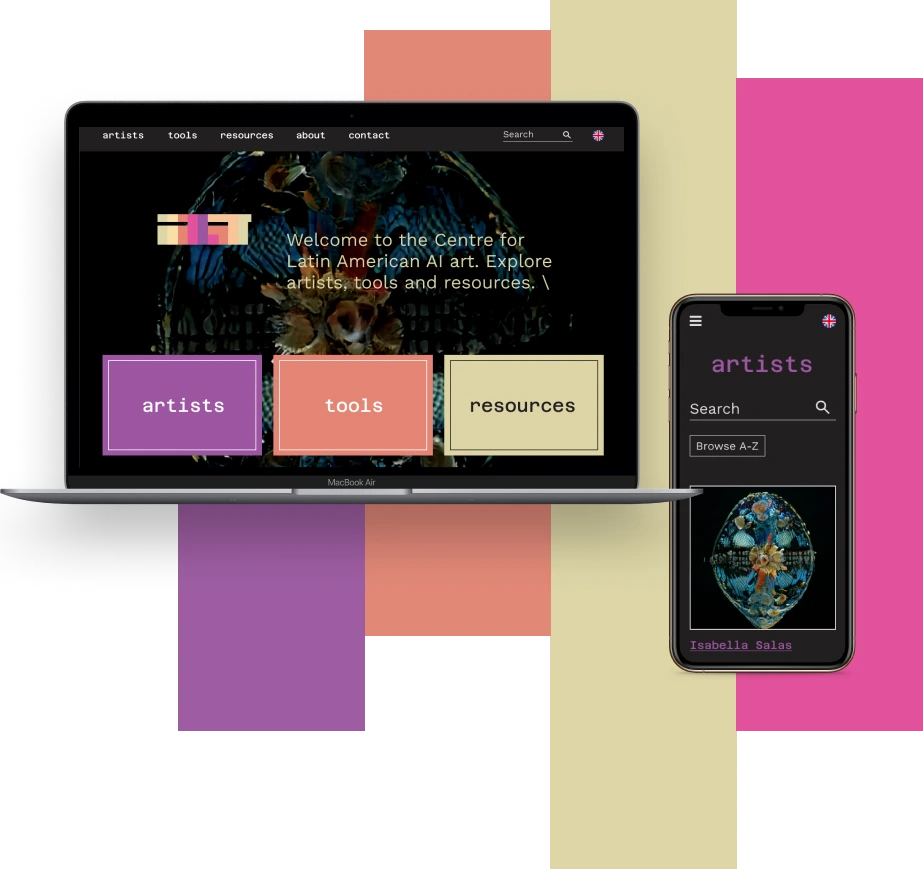
The Centre for Latin American AI Art, AI Latam, showcases the work of Latin American artists and their practices using AI in diverse and innovative ways. Artists, curators, and humanities scholars can find information about AI art made in Latin America or by Latin American artists, as well as tools to make AI-generated content, and academic resources focused on artmaking, creativity, and the ethics of AI.
The Problem
Latin American artists are underrepresented in the global AI art scene and there are no resources and platforms dedicated to showcasing their work. Spanish-language resources related to AI art are scarce, hindering accessibility and knowledge sharing for Spanish-speaking audiences.
The Solution
This led me to create a website that acts as a resource hub dedicated to showcasing and celebrating Latin American AI artists and their work as well as Spanish-language content and resources. The Centre aims to foster a community and facilitate knowledge exchange among artists and researcher
Research and discovery
I conducted a thorough analysis of existing AI art platforms and resources, identifying gaps in representation and accessibility for Latin American artists. This research confirmed the first supposition, namely that there are no Spanish-language resources and very little representation of Latin American AI artists online.
I researched the specific needs and challenges faced by Latin American AI artists and Spanish-speaking audiences by conducting in-depth interviews.
The interviews revealed two main pain points
Difficulties to find up-to-date, relevant and clear resources to learn and use the tools.
Limited opportunities for collaboration outside of local communities.
The design phase
The next step was to create the wireframes for the main pages.
Mobile version wireframes
Desktop version wireframes
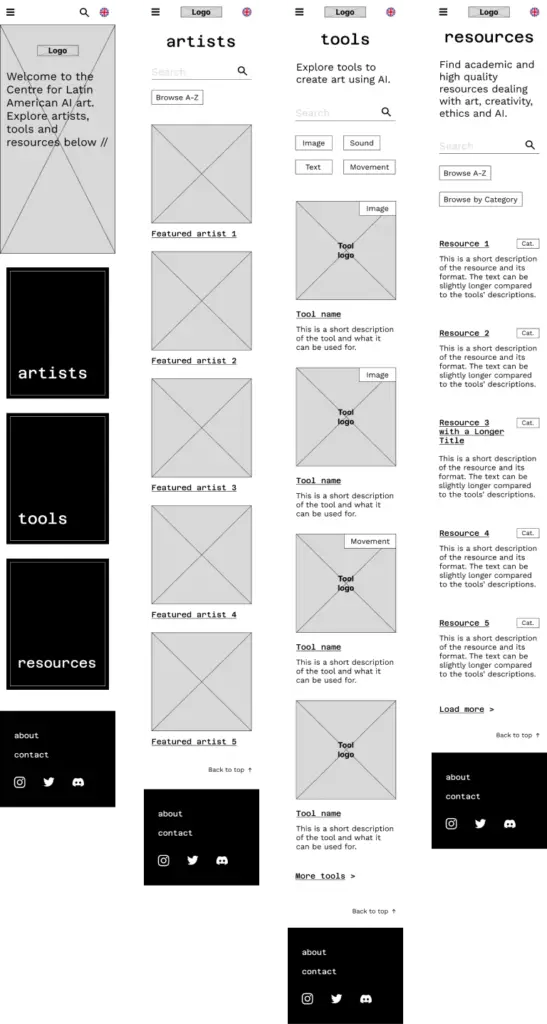
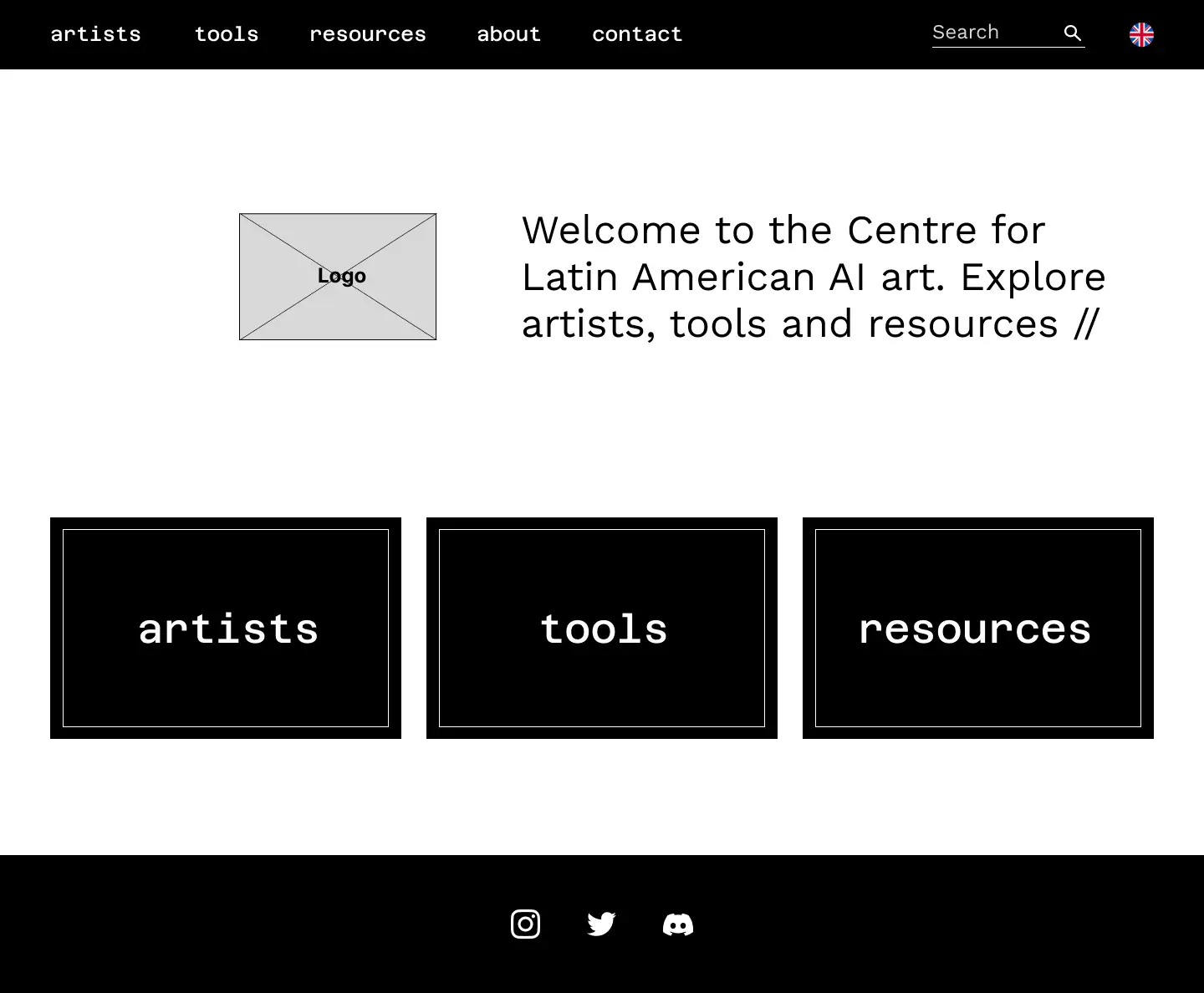
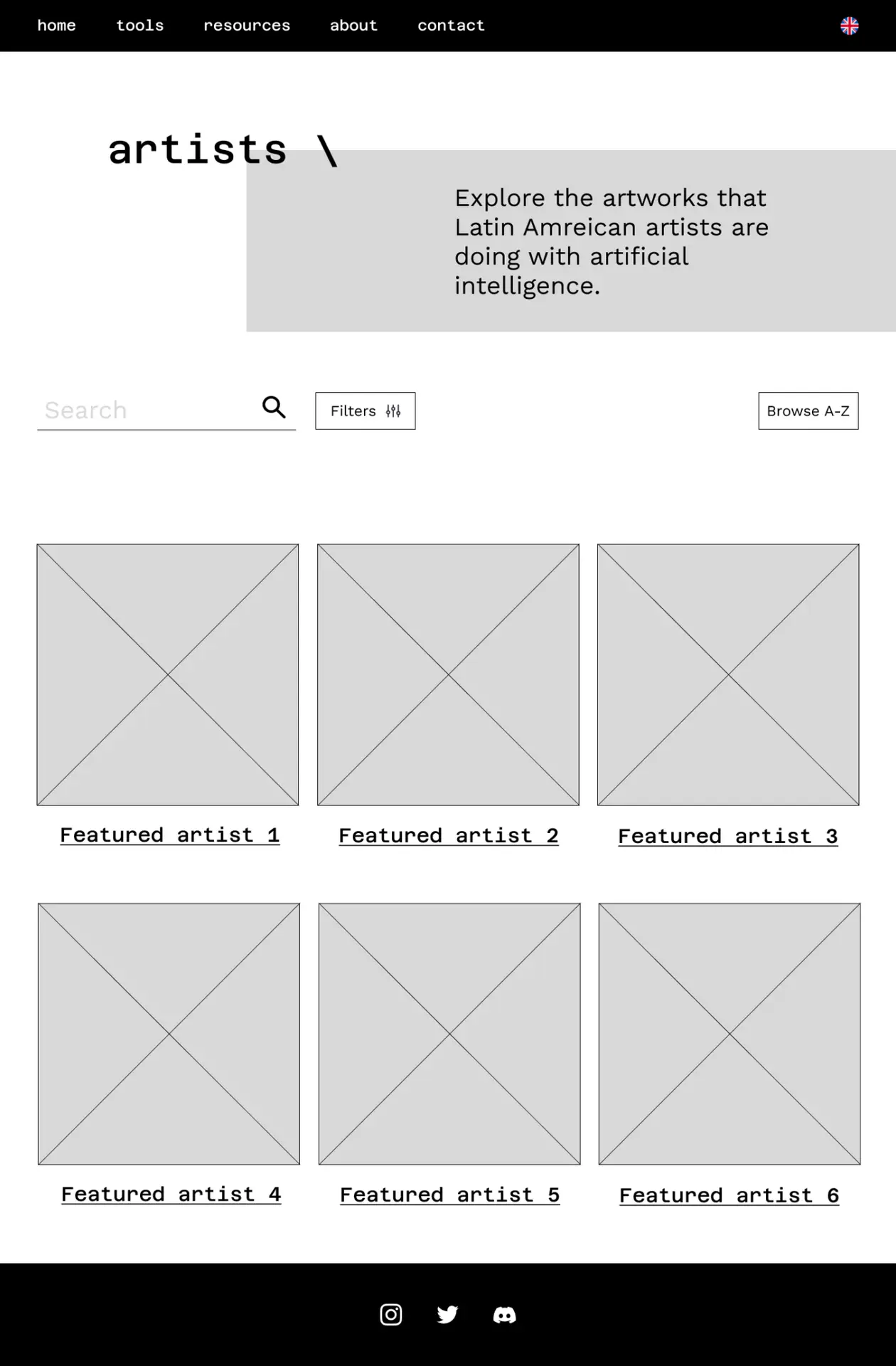
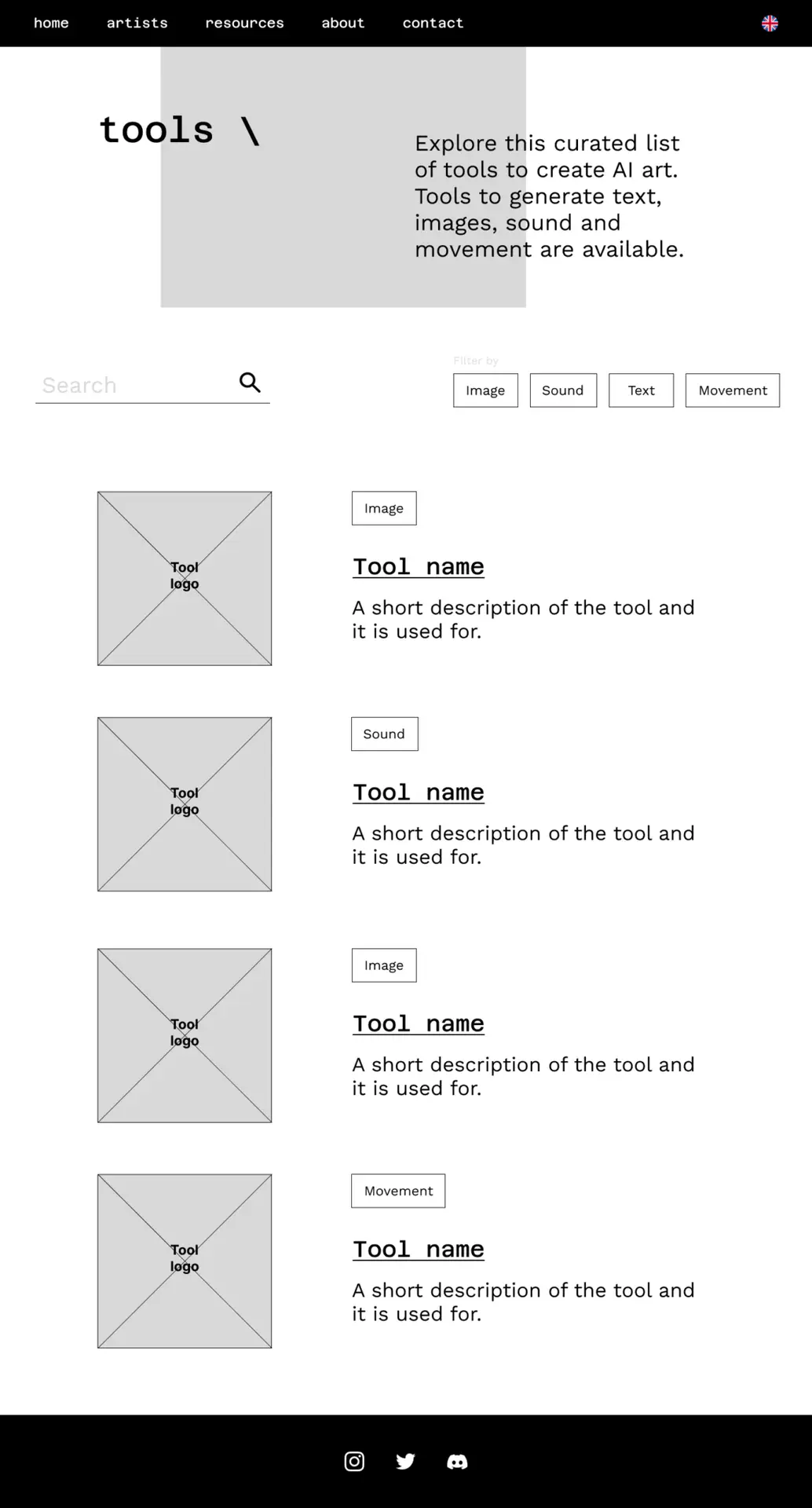
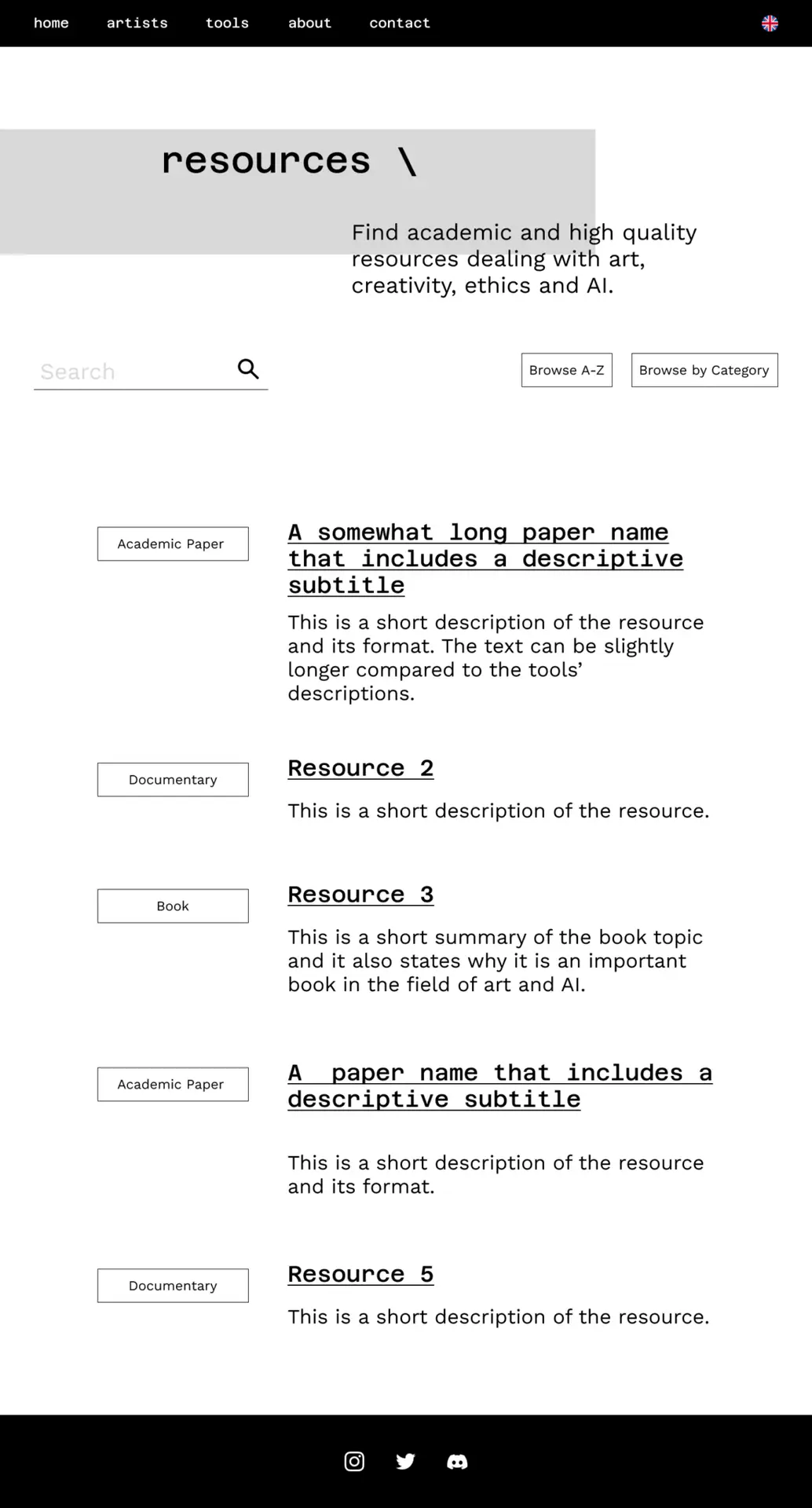
Testing and validation
I tested the website on multiple browsers and screen sizes and conducted an unmoderated usability test with three participants.
Three elements stood out:
Links
Some links in the Homepage were distracting and made the main user flows confusing.
Filtering
Filtering capabilities too limited.
Styling
The style of buttons and filtering labels confused some of the participants.
High fidelity mockups
Design elements
- Each of the sections is clearly differentiated by the colour of its components, allowing the user to unambiguously and immediately identify where they’re at. This endows the colours with a semantic as well as an aesthetic dimension.
- Active filter is highlighted using its negative colour, allowing the user to identify and change it easily.
Accessibility considerations
- Semantically and hierarchically structured HTML pages.
- High-contrast colours.
- A big enough font size.
Outcomes and next steps
The project received positive feedback from users on the website’s design, content, and functionality.
Expanding the artist database, adding more interactive features, and developing the search functionality are possible future enhancements to the website.
Collaboration with artists, developers, and institutions to further develop the platform and foster a thriving Latin American AI art community is essential to continue growing the project.
